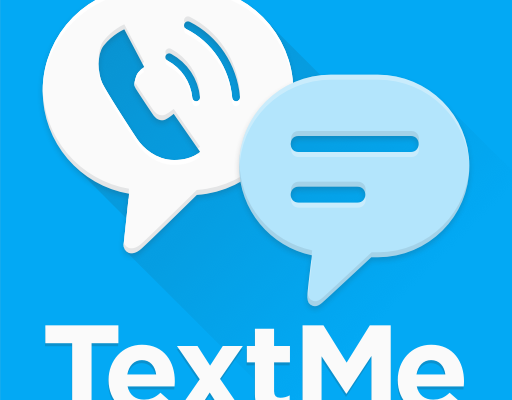An Introduction to React Native App Development!Did you know that 69% of all Americans use Facebook daily?
But this social media network doesn’t limit itself to providing a platform for people to connect. If you’re planning to build mobile apps for both Android and iOS, the social media giant recently introduced a valuable tool. Whether you heard it before, you might be skeptical of how it can aid your development efforts.
Don’t dismiss it yet.
With this guide, you’ll learn about React Native. That way, you’ll know how to use it to improve your app development process. Read on and find out how:
Table of Contents
What Is React Native?
This Facebook-developed application framework caters to mobile applications and is open-source. It first appeared in 2015 at the React JavaScript Configuration Conference. Its design allows you to make mobile applications for both Android and iOS by giving you tools to use React alongside the native mobile platform.
This is possible using a single common language, JavaScript. When it first came out, Facebook only intended to use this framework to build iOS. But its recent support of the Android OS now makes it more versatile and usable for both platforms.
How Does React Native Work?
This framework uses the same working principles with React. The primary difference is that it targets mobile apps instead of browsers. If you’re well-versed in the basics of React, the idea is simple since the framework also manipulates DOMs and compares them.
But mobile apps have no traces of HTML DOM. That’s why React Native won’t manipulate the DOM using a Virtual DOM. Instead, it will run a background process to communicate with the native platform.
This JavaScript thread uses a serialized, asynchronous, and batch Bridge. It sounds complicated, but in simpler terms, the framework uses native views through the messages sent using the bridge between its JavaScript component and the native mobile code.
With this, the final app using this framework works almost the same as a native mobile app. After all, the bridge between JavaScript and Native code exists. This makes it powerful since the resulting application will look and feel like normal mobile apps.
It also gives you access to the native render API while exposing JavaScript interfaces for native platform APIs. This enables you to get into platform-exclusive features. These include location, phone camera, and more.
Why Choose React Native?
Did you know that apps earned over $71 billion across the iOS App Store and Google Play Store in 2018? This trend will only get better from here since single and business users need high-quality apps. These should have impeccable performance, more screens, easy navigation, and excellent design.
Here are some reasons why the framework works best with you:
1. Faster Development and Lower Costs
Everyone desires to get the most benefit while exerting low efforts. That’s where React Native shines since it uses the same code for iOS and Android platforms for deployment. With this, you’ll save both time and money since the development cycle is shorter and you can scale the team involved in the project.
Depending on your situation, you can cut development efforts almost by half. This is possible without sacrificing both quality and productivity.
2. Supports Cross-Platform
With this feature, you can release an app that caters to both iOS and Android operating systems. The framework supports the integration of mobile app development advantages with the agility and power given by React’s native environment.
3. Single Code Base Regardless of Mobile Operating System
It means you only need one code base to deploy the app to various mobile operating systems. You can reuse your components any time, regardless of the level. You can put it into the existing code without rewriting it.
The framework’s open-source nature makes it compatible with other platforms. It also means the whole developer community has access to it. It ensures that the native module writing using a comparable language is simple when linking it to the React Native codebase.
This is necessary when you’re developing features unsupported by React Native’s libraries.
4. Easily Transforms Web Projects into Mobile Decisions
With this framework, you can reuse your code. It only needs an update for two platforms, simplifying bug detection between codebases. Its interface is intuitive and modular, meaning developers can easily understand it even when they aren’t part of a project.
What Do You Need to Start a React Native Project?
Before you start, you must at least be familiar with React, coupled with a solid knowledge of JavaScript. The good news is that even without prior React experience, you can follow it. In this React Native tutorial, you’ll learn how to set up the right environment for the framework.
Your priority is to install NodeJS and NPM. After that, you have two methods of building an application using React Native. You can use either Expo or CLI, but the former is much easier since its features get rid of some barriers upfront.
Using Expo, you can use the following commands to make a new project using React Native:
expo init (project name)
cd (project name)
npm start
After this, install the Expo client app on either your iOS or Android phone. Connect it to the same wireless network as the computer you’re using to develop your mobile app. Pick your preferred text editor to open App.js and edit some lines.
Do you need good databases to build React Native app with ease? If so, read the linked article and learn the best ones for your application. You can also use React Native elements to hasten your application development process.
Once you save your changes, your application reloads automatically. This finishes your development procedure.
Try React Native Today!
These are things you must consider when you’re looking for a definite way to decrease development cycles for mobile applications. Use React Native and see how it improves app efficiency.
Did you find this guide helpful in getting started with React Native? If so, we encourage you to read our other posts and learn more useful tutorials today.





